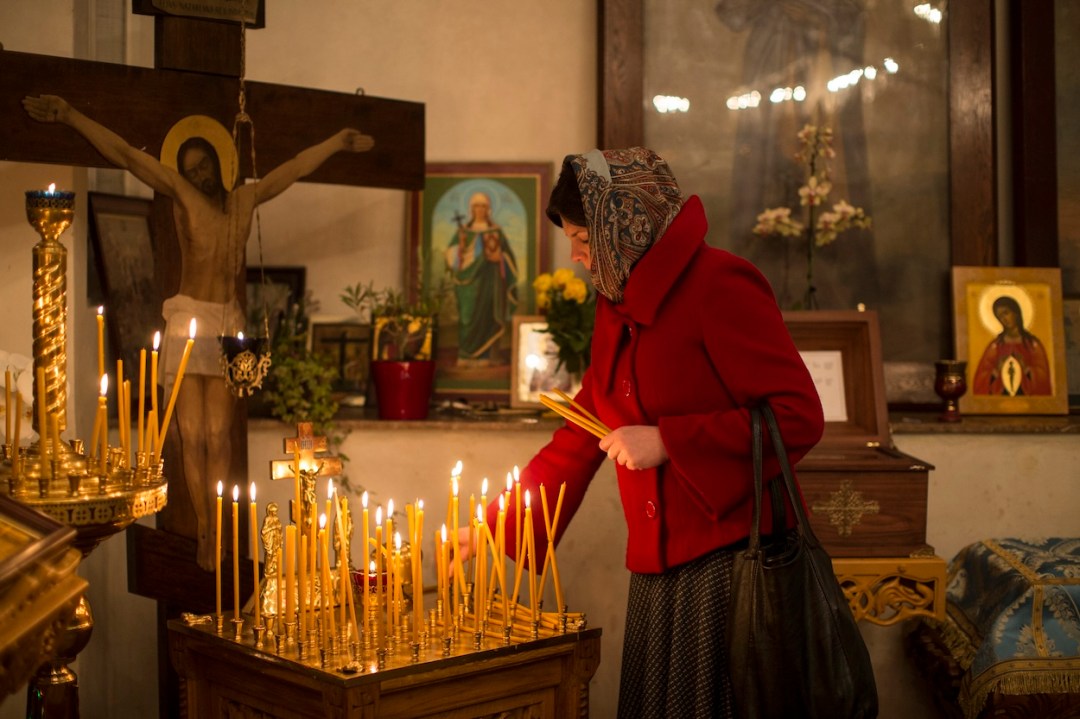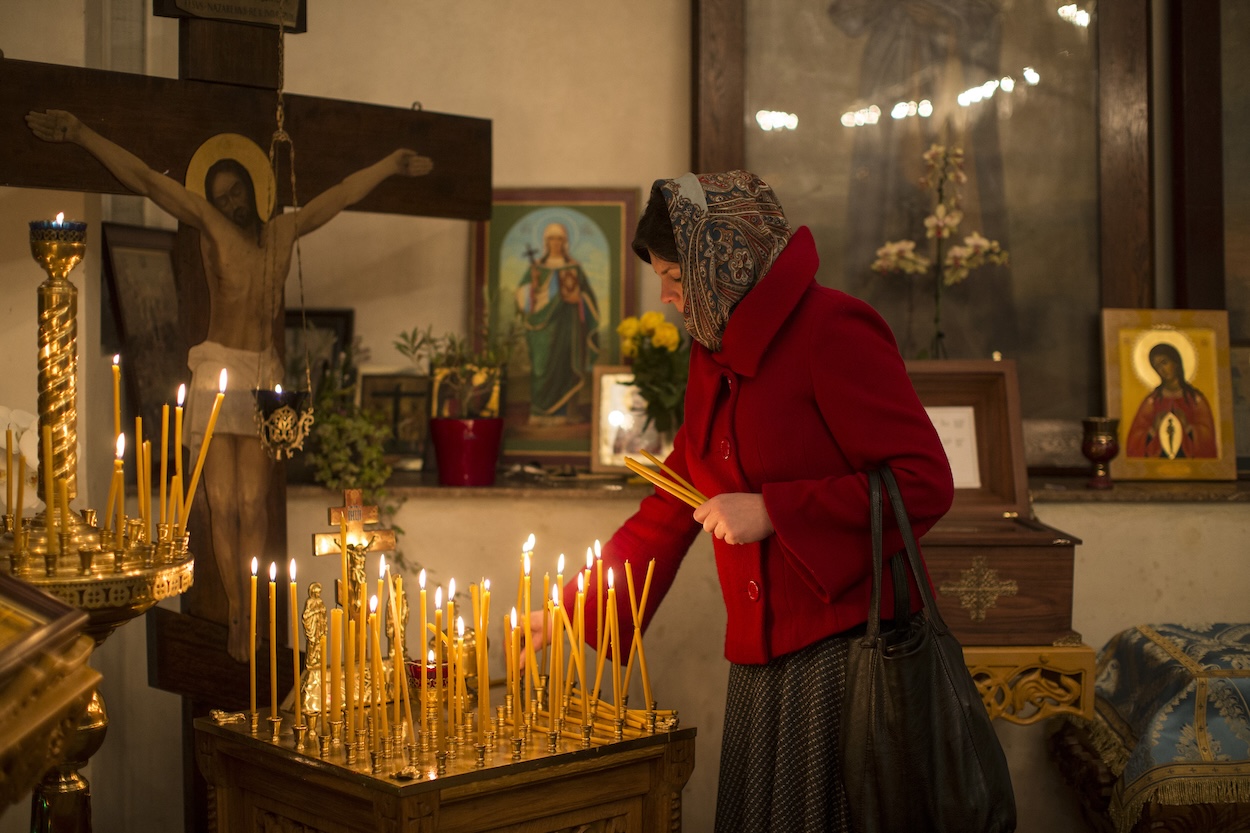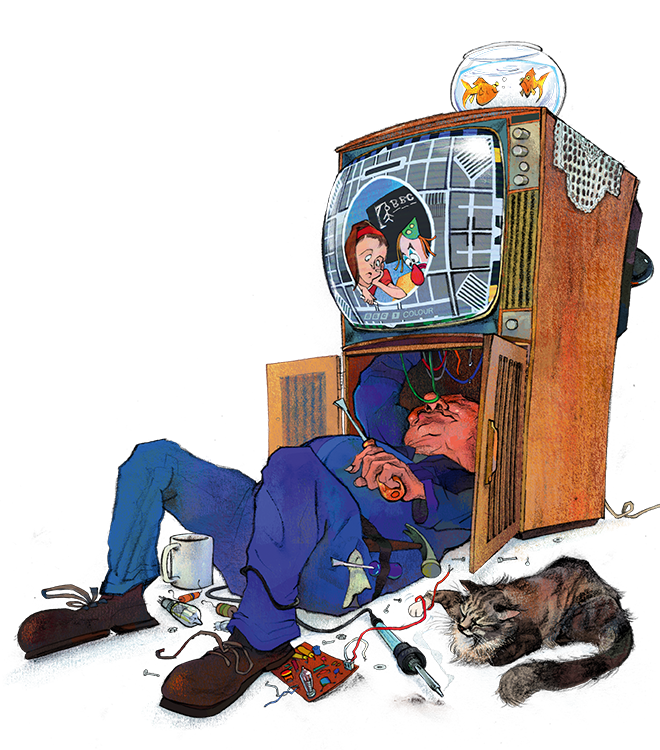When, after three years of living in Eastern Europe, I came back to the UK, I found myself acutely nostalgic for the post-communist world. Life over there had a charm and directness that London seemed to lack. Luckily, I discovered that even in the capital you can find the best of Eastern Europe all around you – if you know where to look.
A lovely place to walk into on a winter afternoon, or to visit at Orthodox Easter, as people teem outside and priests scatter holy water about
I was aware of course, even in my teens, of Polish London. There was the restaurant Daquise in South Kensington which, before its 2012 refit, was one of those places you couldn’t imagine the area without. It had a cosy, comforting quality to it, retro but completely uncontrived: lino floors, formica tables and some strange Christmassy artworks that were up all year round, giving it a festive feel. Daquise was the perfect place to stop off after visiting the Natural History Museum or the V&A – the conversations you had in there were oddly heightened, and over its glass cups of milky coffee you saw, as one novelist pointed out, couples visibly falling in love.
A few minutes away on Exhibition Road, you had the Polish Hearth Club (Ognisko Polskie), opened at the start of second world war. Ognisko had a sumptuous sprucing up a decade ago (no one was complaining, especially the diners). But it was equally likeable, if in a different way, in its previous incarnation, with pink walls, tatty armchairs, portraits of Polish luminaries (they remain) and the well-trodden carpets of an old hotel. You felt you’d wandered off the streets of Kensington into an enclave of Polish nationalism, as though General Sikorski, prime minister of the Polish government-in-exile, might march in at any moment. It was a good place for celebrations – charity balls, birthday parties, wedding receptions. They’d do a decent knockdown set menu for your guests: borscht, potato pancakes with sour cream, hot pecan pie and, as a digestif, a shot of honey vodka. Later I also discovered (Poles are nothing if not thorough) the Polish Cultural Centre (POSK) in Hammersmith – a more communist-era beast – where families would congregate after Sunday Mass at the nearby St. Andrew Bobola church. POSK’s top floor restaurant, with its starched napkins, dark brown walls and balconies for smoking, was the best and most piercing of places on a moody, overcast day. With a jazz café and its theatre, where regular Polish plays for kids were performed, you felt a little chunk of Warsaw had come to land in West London – surely just the effect they’d intended.
But Eastern (or Central) Europe, of course, wasn’t only Poland. The Gay Hussar in Soho, Labour party restaurant of choice, flew the flag for Hungary, serving up pörkölt, pálinka and politics till its closure in 2018. Its manager John Wrobel, erudite, eloquent, waspish and welcoming, was everyone’s idea of the perfect Middle European maître d’. Further north, Hampstead Village had (and still does) Louis’s Hungarian Patisserie, with its leather-upholstered benches and oak-veneered walls, its old ladies lingering over their dobos tortes and krémes custard slices. In West Hampstead, just down the road, stands the Bohemia House restaurant, ‘serving the Czech and Slovak community since the beginning of 1946,’ and which, along with the Pilsner Urquell it dispenses on draft and the roast pork its customers depend on, organises specialised food events. How many Londoners have been to a three-day schnitzel or goulash festival? They could have had either at Bohemia House this year.
Then, of course, there are the Eastern European churches all over London, of which the Polish St Andrew Bobola is just one example. Romanians have their Orthodox church (St Dunstan-in-the-West) on Fleet Street, the Ukrainians their Catholic Cathedral of the Holy Family in Exile in Marylebone, while in Hammersmith there’s the Hungarian Reformed Church for Magyar families. There is of course, the Russian Orthodox Church in Ennismore Gardens, with what it lacks in cupolas being amply made up for in its Divine Liturgy, sung by a resident choir, its incense and its candles – a lovely place to walk into on a winter afternoon, or to visit at Orthodox Easter, as people teem outside and priests scatter holy water about.
But what really allows you to live an Eastern European life in London are all the events going on, many of which are free, most of which Londoners remain completely unaware of. A look at websites of London places like the Romanian, Hungarian or Ukrainian cultural institutes gives you a taste of what you can find in a typical month. This October, at no charge, I can, among other things, listen to an award-winning Hungarian jazz pianist, go to a photographic exhibition of grand, abandoned Romanian buildings, have a guided tour round the works of a prominent Prague painter, or see a Ukrainian poet being interviewed on writing about war. Ognisko Polskie, as usual, are organising book readings, violin recitals and concert buffets. In the past I’ve attended nights of Hungarian gypsy dancing, Bulgarian art exhibitions, Romanian comedies and concerts. At the end of this month the Made in Prague festival starts, an almost daily programme of Czech films, music, art, workshops, with tickets, if not free, at prices to restore your faith.
This was the strand of London I found at a time when the city seemed to have lost all interest for me – a kind of netherworld, full of hidden communities, atmospheres, artworks, rituals and often vivid conversations. Slowly unearthing its treasures, at one institute or another, was a kind of rebirth.








Comments